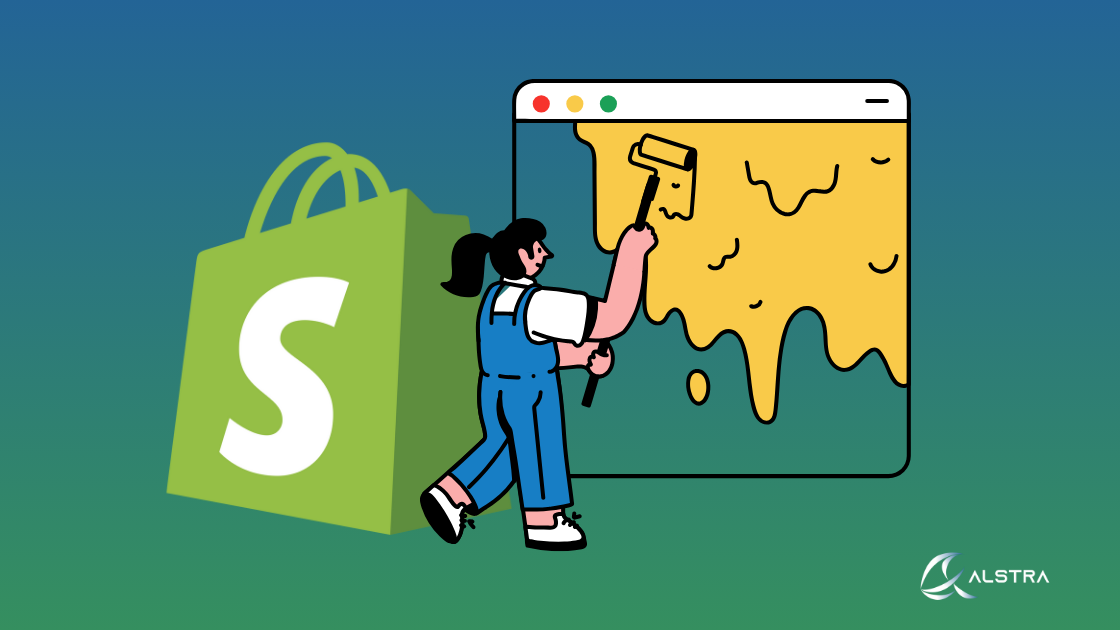Introduction
Changing the theme of your Shopify store can help to greatly improve the look of it and maybe increase conversion. However, the process goes well beyond merely choosing a new design. Maintaining compliance, keeping SEO ranks, and guaranteeing business continuity require Canadian companies running in a competitive e-commerce environment effectively implementing this shift.
Why Consider a Theme Change?
A theme update offers numerous advantages for Canadian merchants:
- Access to Shopify’s latest features, including expanded customization options and improved mobile responsiveness
- Improved performance indicators that directly affect conversion rates.
- Modernized user experience in accordance with current design standards.
- Improved security by patching vulnerabilities.
- Improved compatibility with the expanding app ecosystem.
The Essential Pre-Transition Checklist
Document Your Current Configuration
Before making any changes, thoroughly document your existing setup. Shopify’s theme architecture stores customizations within theme-specific settings rather than global store data. This implies that your well chosen section layouts, typeface, and color schemes will not always fit a new theme.
Best practice: Create a comprehensive inventory by duplicating your current theme through the Online Store > Themes > … > Duplicate pathway. This creates a permanent reference point you can revisit throughout the transition process.
Evaluate Feature Compatibility
Not all themes are created equal, particularly when comparing older “vintage” themes to newer Online Store 2.0 templates. Critical evaluation points include:
- App compatibility with your new theme choice
- Support for specialized page templates your business relies on
- Availability of features like product filters or AJAX cart functionality
- Accommodation for any custom code implementations
The Shopify Theme Store offers filtering options to narrow selections based on your specific requirements, while theme demos allow preliminary feature testing.
Legitimate Theme Acquisition Channels
To prevent intellectual property problems, Canadian companies especially have to be careful with appropriate licensing. Shopify offers four approved ways of acquisition:
- The Official Theme Store: Features both free and premium themes that have undergone security and compatibility verification
- Direct Upload: Accepts ZIP-formatted themes from developers or third parties
- GitHub Integration: Allows deployment via version control for businesses working with development partners
- Shopify CLI: Offers command-line tools for technical teams managing theme development
A critical caution: Be wary of freelancers offering premium themes at deeply discounted rates. Community discussions have highlighted instances where unlicensed copies are provided, potentially exposing your business to legal liability. Always guarantee right licensing; authentic Theme Store purchases contain update entitlements and support lacking in illegal copies.
The Transition Process
Installation Workflow
- Official Theme Store Installation:
- Navigate to Online Store > Themes > Add theme
- Browse available options or apply filters
- Select “Try theme” to evaluate before committing
- Customize in draft mode before publishing
- ZIP Upload Method:
- Select Add theme > Upload zip file
- Choose your downloaded theme package
- The theme will automatically appear in your library
- Developer-Focused Methods:
- Utilize Shopify CLI’s theme push command
- Connect GitHub repositories for streamlined updates
Your newly installed theme will stay dormant in your Theme Library until specifically published, allowing complete preparation without compromising your live store.
Configuration Migration Strategy
Unlike product data or customer information, theme-specific settings don’t transfer automatically during theme changes. You’ll need to manually reconfigure:
- Brand colors and typography
- Header and footer layouts
- Section ordering and content placement
- App embed locations
- Custom code snippets
The theme editor (accessed via the “Customize” button) provides a visual interface for most adjustments. For stores with extensive customizations, consider:
- Documenting each configuration setting methodically
- Creating a prioritized checklist of essential elements
- Allocating sufficient time for thorough implementation
- Enlisting professional assistance for complex migrations
Custom Code Implementation
Reintegrating code changes needs particular consideration for Canadian companies using unique features. Ideal practices consist in:
- Maintaining detailed documentation of all custom code
- Using version control systems to track changes systematically
- Creating modular snippet files for easier transfer
- Testing thoroughly in a duplicate environment
Going Live with Your New Theme
The Publication Process
Once your new theme is properly configured, publication is straightforward:
- From the admin dashboard: Themes > Actions > Publish
- From the theme editor: Click the “Publish” button
Shopify will instantly switch your live theme, though DNS propagation may cause brief visibility delays. Your previous theme remains safely archived, allowing immediate rollback if necessary.
Critical Post-Launch Verification
Immediately after publishing, conduct a comprehensive validation process:
- Functional Verification:
- Test navigation menus and internal links
- Verify product variant selection and cart functionality
- Complete test purchases through your checkout flow
- Evaluate mobile responsiveness across device types
- Integration Confirmation:
- Verify app embeds are functioning properly
- Confirm analytics and tracking codes are active
- Test payment gateway connections
- Content Integrity Check:
- Review image rendering across product collections
- Examine text formatting for consistency
- Verify metadata implementation
- Performance Assessment:
- Run Lighthouse tests for speed and SEO metrics
- Measure mobile load times in various network conditions
- Evaluate third-party script impacts
Protecting Your SEO Investment
Theme changes can potentially impact your hard-earned search rankings. Implement these mitigation strategies:
- Use permanent (301) redirects for any altered URL structures
- Audit meta descriptions and title tags with SEO tools
- Preserve existing schema markup in new templates
- Submit updated sitemaps to search engines
Long-Term Theme Management
Update Maintenance Protocol
Shopify regularly releases theme updates containing security patches and feature enhancements. Establish a structured approach to updates:
- Review available updates through Themes > Update available
- Always duplicate themes before applying updates
- Document custom code that will need reimplementation
- Read release notes carefully for breaking changes
Version Control Best Practices
Implement a structured approach to theme management:
- Production: Your live, published theme
- Staging: A duplicate environment for testing updates
- Archive: Previous versions for reference or rollback scenarios
For businesses working with development teams, leverage GitHub integration for more sophisticated version control.
Conclusion
Transitioning to a new Shopify theme provides enormous potential for Canadian businesses to improve customer experience and conversion rates. However, successful implementation necessitates meticulous planning, methodical execution, and rigorous validation. By following the steps outlined in this guide—properly documenting existing configurations, ensuring legitimate theme acquisition, methodically migrating settings, and implementing comprehensive testing—you can reduce disruption while maximizing the benefits of your refreshed online presence.
Consider hiring certified Shopify Experts to help you overcome the technological complexity and ensure a smooth transition. Proper implementation will pay off in terms of better customer experience and long-term business success.
Ready to Transform Your Shopify Store?
Don’t let the complexities of theme migration hold your business back from achieving its full e-commerce potential. At Alstra Solutions, we specialize in smooth Shopify theme migrations that keep your SEO rankings intact while improving your store’s functionality and visual appeal. As a federally licensed IT firm and official Shopify Partner based in Toronto, we contribute years of experience to each project, ensuring that your online store runs smoothly throughout the changeover process.
Ready to elevate your e-commerce presence? Contact our team of experts today to discuss your Shopify theme migration needs. From custom design implementation to SEO preservation and comprehensive post-launch support, we’re here to help your Canadian business thrive in the competitive online marketplace.

